Mastering the art of darts, and specifically scoring inner bull 50 points, is the quickest route to victory and requires a blend of skill, precision, and mental fortitude. This article delves into the techniques, strategies, and mental game aspects necessary to consistently hit that coveted inner bullseye. We’ll cover stance, grip, throwing technique, aiming, practice drills, and how to overcome common challenges to improve your darts game significantly.
⚠️ Still Using Pen & Paper (or a Chalkboard)?! ⚠️
Step into the future! The Dart Counter App handles all the scoring, suggests checkouts, and tracks your stats automatically. It's easier than you think!
Try the Smart Dart Counter App FREE!Ready for an upgrade? Click above!
The Foundation: Stance, Grip, and Setup for Scoring Inner Bull 50 Points
Before even thinking about the throw, establishing a solid foundation is crucial. This involves perfecting your stance, grip, and overall setup. These elements work together to provide stability, control, and consistency in your dart throwing motion. Let’s break down each component:
Perfecting Your Stance
Your stance provides the base from which you launch your dart. Here are some key considerations:
- Foot Placement: Most players adopt a slightly angled stance, with their dominant foot forward and aligned with the oche (the throwing line). Experiment to find what feels most natural and balanced. A common setup is with the front foot pointing directly at the board and the back foot placed slightly behind and to the side, offering stability.
- Weight Distribution: Maintain a balanced weight distribution, typically around 60% on your front foot and 40% on your back foot. This prevents you from swaying or shifting your weight during the throw, ensuring a smoother release.
- Body Alignment: Keep your body relatively still from the waist down. Excessive movement can throw off your aim. A slight lean forward can help maintain balance and bring you closer to the board.
The Art of the Grip
Your grip is the connection between you and the dart, dictating the level of control you have over its flight. There’s no single “right” grip, but here are some guidelines:
- Consistency is Key: Once you find a grip that feels comfortable and secure, stick with it. Avoid making constant adjustments, as this will negatively impact your consistency.
- Pressure: Apply enough pressure to maintain control of the dart without squeezing it too tightly. A relaxed grip allows for a smoother release and reduces tension in your arm.
- Finger Placement: Experiment with different finger placements. Some players prefer a three-finger grip, while others use a four-finger grip. Find what gives you the best feel and control.
Setting Up for Success
The setup involves positioning yourself comfortably at the oche and preparing your mind and body for the throw. This is where you visualize scoring inner bull 50 points.
- Mental Preparation: Take a moment to clear your mind and focus on the target. Visualize the dart hitting the inner bullseye.
- Dart Position: Hold the dart at eye level, aligning it with your target. This helps you maintain a consistent throwing motion.
- Breathing: Take a deep breath and exhale slowly. This helps to relax your muscles and calm your nerves.
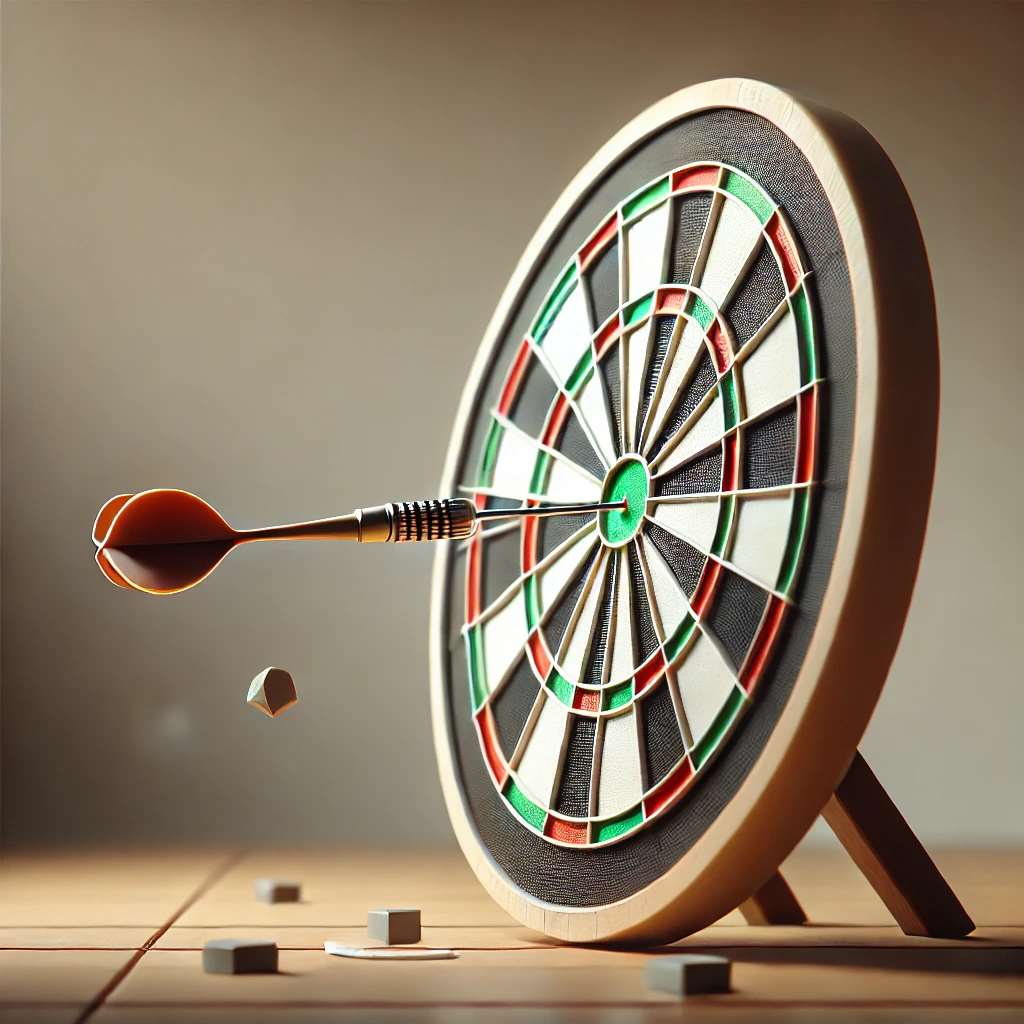
Mastering the Throwing Technique to Improve Your Dart Game
Once you’ve established a solid foundation, the next step is to refine your throwing technique. A smooth, consistent, and repeatable throwing motion is essential for accuracy. Here’s how to improve:
The Backswing
The backswing is the initial movement of your arm before the forward throw. It sets the stage for a powerful and accurate release.
- Smooth and Controlled: The backswing should be smooth and controlled, avoiding any jerky or abrupt movements.
- Consistent Length: Maintain a consistent backswing length for each throw. This helps to ensure that you release the dart at the same point in your throwing motion every time.
- Elbow Position: Keep your elbow tucked in close to your body. This helps to stabilize your arm and prevent it from swaying from side to side.
The Forward Throw
The forward throw is the action that propels the dart towards the target. Focus on these aspects:
- Straight Line: Throw the dart in a straight line towards the target. Avoid any side-to-side movement.
- Follow Through: Follow through completely with your arm after releasing the dart. This helps to ensure that the dart travels in the intended direction.
- Release Point: Release the dart at the same point in your throwing motion every time. This requires practice and consistency.
Maintaining a Consistent Rhythm
Rhythm is the timing and flow of your throwing motion. A consistent rhythm helps to improve accuracy and reduce variability.
- Develop a Routine: Establish a pre-throw routine that includes your stance, grip, and aiming. This helps to create a consistent rhythm.
- Practice Regularly: The more you practice, the more consistent your rhythm will become.
- Avoid Rushing: Take your time and focus on executing each step of your throwing motion correctly.
Remember to revisit Basic Darts Fundamentals for Beginners to strengthen your overall dart skills.
The Art of Aiming: Targeting the Inner Bullseye
Accurate aiming is paramount when trying to consistently achieve scoring inner bull 50 points. It involves aligning your eye, dart, and target in a straight line. Here are key techniques to enhance your aiming skills:
Visual Alignment
Proper visual alignment ensures that you’re aiming directly at the inner bullseye.
- Dominant Eye: Determine your dominant eye and use it to focus on the target. Close your non-dominant eye to confirm which eye is providing the most accurate visual information.
- Target Fixation: Fixate your gaze on the inner bullseye before initiating your throw. Avoid shifting your focus during the throwing motion.
- Reference Points: Use reference points on the dartboard or surrounding area to help you align your shot. This can be particularly helpful when aiming for specific targets.
Adjusting for Parallax
Parallax is the apparent displacement of an object when viewed from different positions. This can affect your aiming accuracy, especially at longer distances.
- Consistent Head Position: Maintain a consistent head position at the oche to minimize parallax error.
- Adjust Your Stance: Experiment with slight adjustments to your stance to compensate for parallax.
- Practice from Different Angles: Practice aiming from different positions at the oche to develop a better understanding of how parallax affects your shots.
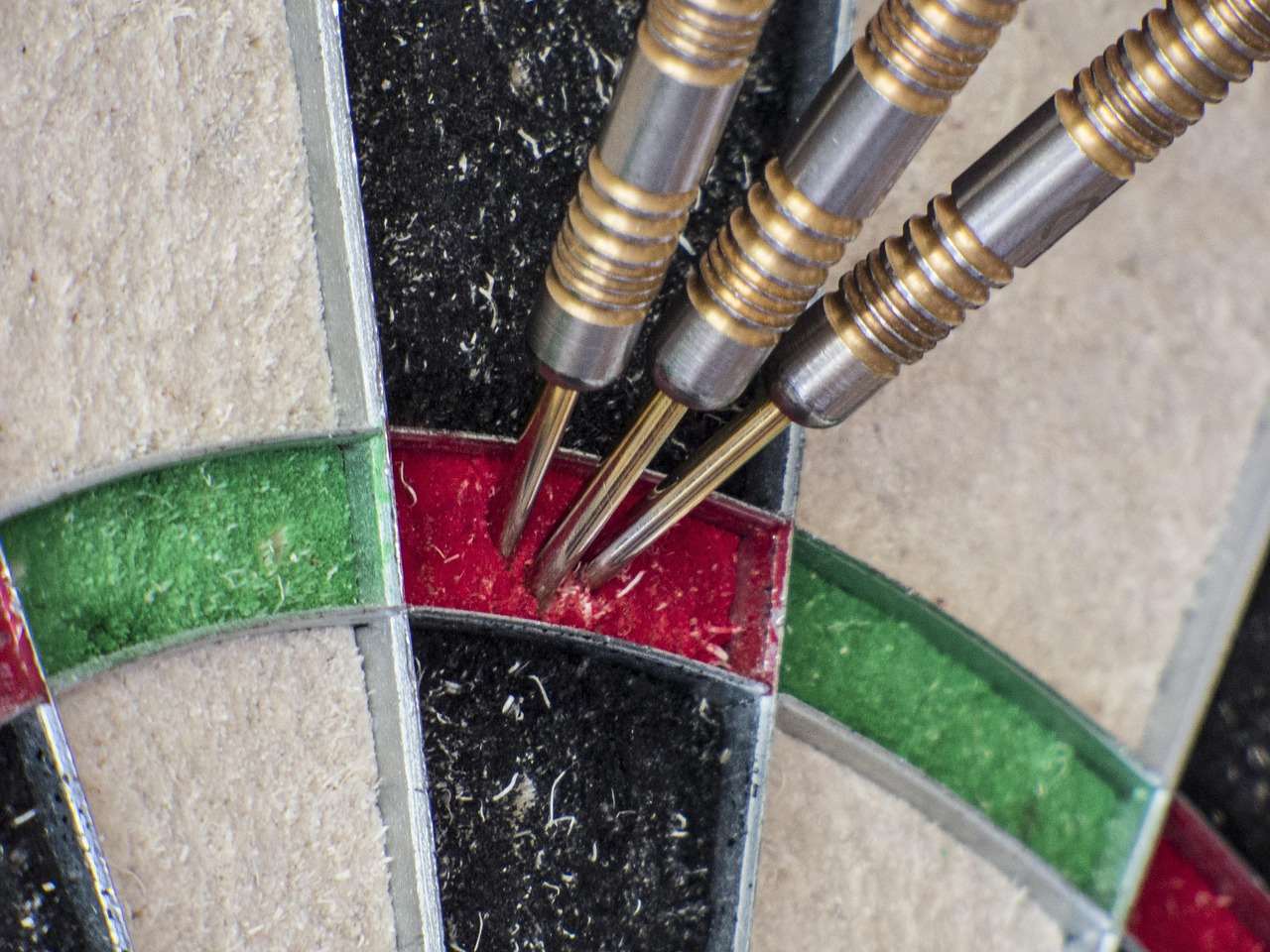
Mental Visualization
Mental visualization can significantly improve your aiming accuracy. It involves creating a mental image of the dart hitting the inner bullseye before you throw.
- Positive Imagery: Visualize the dart flying straight and true towards the target. Focus on the feeling of success and confidence.
- Repetition: Practice mental visualization regularly to reinforce the image in your mind.
- Integration with Practice: Combine mental visualization with physical practice to maximize its effectiveness.
Practice Drills for Scoring Inner Bull 50 Points
Consistent practice is crucial for honing your skills and improving your ability at scoring inner bull 50 points. Incorporate these drills into your routine:
The Bullseye Challenge
This drill focuses specifically on improving your accuracy at hitting the inner bullseye.
- Objective: Hit the inner bullseye as many times as possible in a set number of rounds.
- Rules: Set a target number of rounds (e.g., 10 rounds of 3 darts each). Keep track of how many inner bullseyes you hit in each round.
- Progression: Gradually increase the difficulty by reducing the number of darts per round or increasing the target number of inner bullseyes.
The Around the Clock Drill
This drill helps to improve your accuracy across the entire dartboard.
- Objective: Hit each number on the dartboard in sequence, starting with 1 and ending with 20.
- Rules: You must hit each number three times before moving on to the next number. If you miss, you must start over from the beginning.
- Progression: Time yourself to see how quickly you can complete the drill. Try to beat your personal best each time you practice.
The Doubles Drill
This drill focuses on improving your accuracy at hitting the doubles ring.
- Objective: Hit each double on the dartboard in sequence, starting with double 1 and ending with double 20.
- Rules: You must hit each double three times before moving on to the next double. If you miss, you must start over from the beginning.
- Progression: Time yourself to see how quickly you can complete the drill. Try to beat your personal best each time you practice.
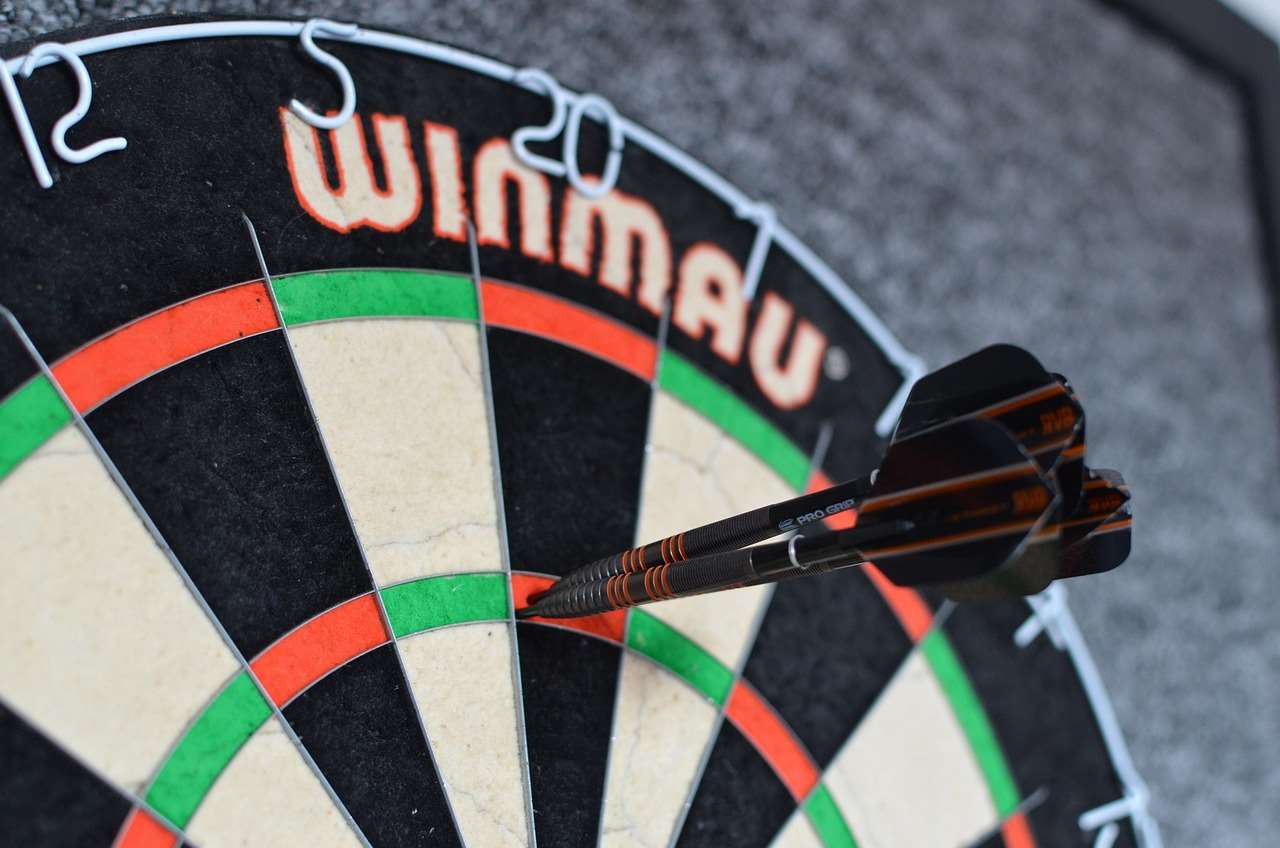
Overcoming Common Challenges in Darts
Even with proper technique and diligent practice, you’ll inevitably encounter challenges along the way. Addressing these challenges is crucial for continued improvement.
The Yips
The yips are a condition characterized by involuntary muscle spasms that can affect your throwing motion. This is often related to performance anxiety.
- Relaxation Techniques: Practice relaxation techniques such as deep breathing and meditation to calm your nerves.
- Focus on Process: Shift your focus from the outcome to the process. Concentrate on executing each step of your throwing motion correctly.
- Seek Professional Help: If the yips persist, consider seeking professional help from a sports psychologist or therapist.
Inconsistency
Inconsistency is a common challenge for dart players of all skill levels. It can be frustrating, but it’s important to stay patient and persistent.
- Analyze Your Technique: Carefully analyze your throwing technique to identify any areas of weakness or inconsistency.
- Practice Regularly: Consistent practice is the best way to improve your consistency.
- Record Your Progress: Keep track of your scores and performance over time to identify patterns and track your progress.
Mental Game
The mental game is just as important as the physical game in darts. Staying focused, confident, and resilient is crucial for success.
- Positive Self-Talk: Use positive self-talk to boost your confidence and motivation.
- Visualization: Visualize success before each throw.
- Stay Calm Under Pressure: Practice staying calm and focused under pressure.
Advanced Strategies for Achieving Scoring Inner Bull 50 Points
Beyond the fundamentals, employing advanced strategies can elevate your game and increase your chances of consistently scoring inner bull 50 points. These include nuanced adjustments and mental approaches.
Dart Selection and Customization
The type of darts you use can significantly impact your performance. Experiment with different weights, shapes, and materials to find what works best for you.
- Weight: Experiment with different dart weights to find what feels most comfortable and controllable.
- Shape: Different dart shapes can affect the dart’s flight characteristics. Try different shapes to see what gives you the best accuracy.
- Material: Darts are typically made from brass, nickel silver, or tungsten. Tungsten darts are denser and more expensive, but they offer better accuracy and durability.
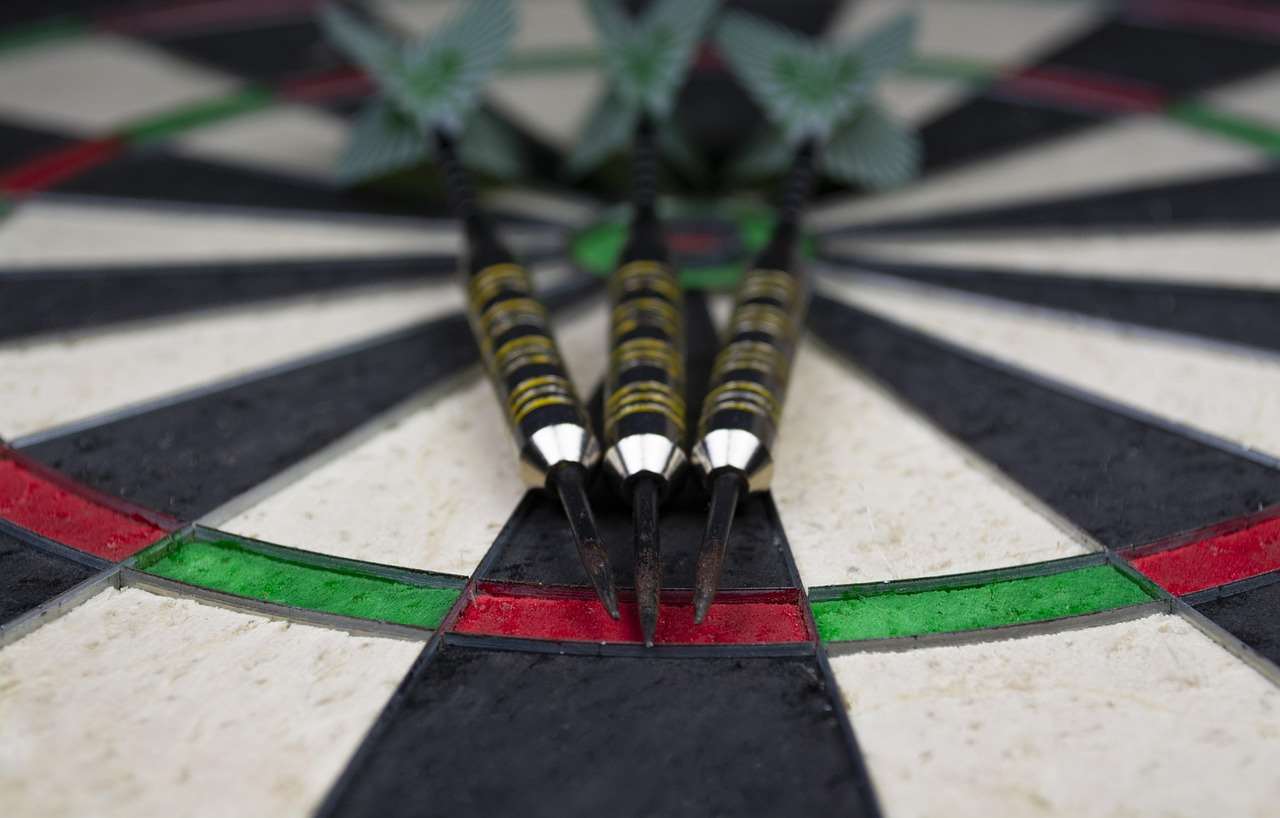
Trajectory Adjustments
Mastering slight trajectory adjustments can help you compensate for variations in your throw and environmental conditions.
- Lofting: Lofting is throwing the dart with a higher arc. This can be helpful for clearing obstacles or compensating for a lower release point.
- Drifting: Drifting is throwing the dart with a slight side-to-side movement. This can be helpful for compensating for wind or other environmental factors.
- Flat Throw: A flat throw refers to a dart thrown with minimal arc, directly at the target.
Mindfulness and Presence
Cultivating mindfulness and presence can help you stay focused and avoid distractions during your throw.
- Focus on the Present Moment: Avoid dwelling on past mistakes or worrying about future outcomes. Focus on the present moment and the task at hand.
- Observe Your Thoughts: Observe your thoughts and emotions without judgment. Acknowledge them and let them pass without getting carried away.
- Engage Your Senses: Engage your senses to become more aware of your surroundings. Notice the feel of the dart in your hand, the sound of the crowd, and the sight of the target.
Also remember to consider adapting darts rules for beginners to make the game more enjoyable while practicing.
Analyzing and Improving Your Performance
To continually improve at darts, particularly in scoring inner bull 50 points, a critical step is analyzing your performance and making targeted adjustments. This includes both objective data and subjective observations.
Tracking Your Statistics
Keeping track of your statistics provides valuable insights into your strengths and weaknesses.
- Hit Rate: Calculate your hit rate for different targets, such as the inner bullseye, doubles, and trebles.
- Average Score: Track your average score per dart and per round.
- Checkout Percentage: Calculate your checkout percentage to assess your ability to finish games.
Video Analysis
Recording and analyzing your throwing motion can reveal subtle flaws that you may not be aware of.
- Record Your Throws: Use a camera or smartphone to record your throws from different angles.
- Analyze Your Technique: Review the footage to identify any inconsistencies or flaws in your throwing motion.
- Compare with Pros: Compare your technique with that of professional dart players to identify areas for improvement.
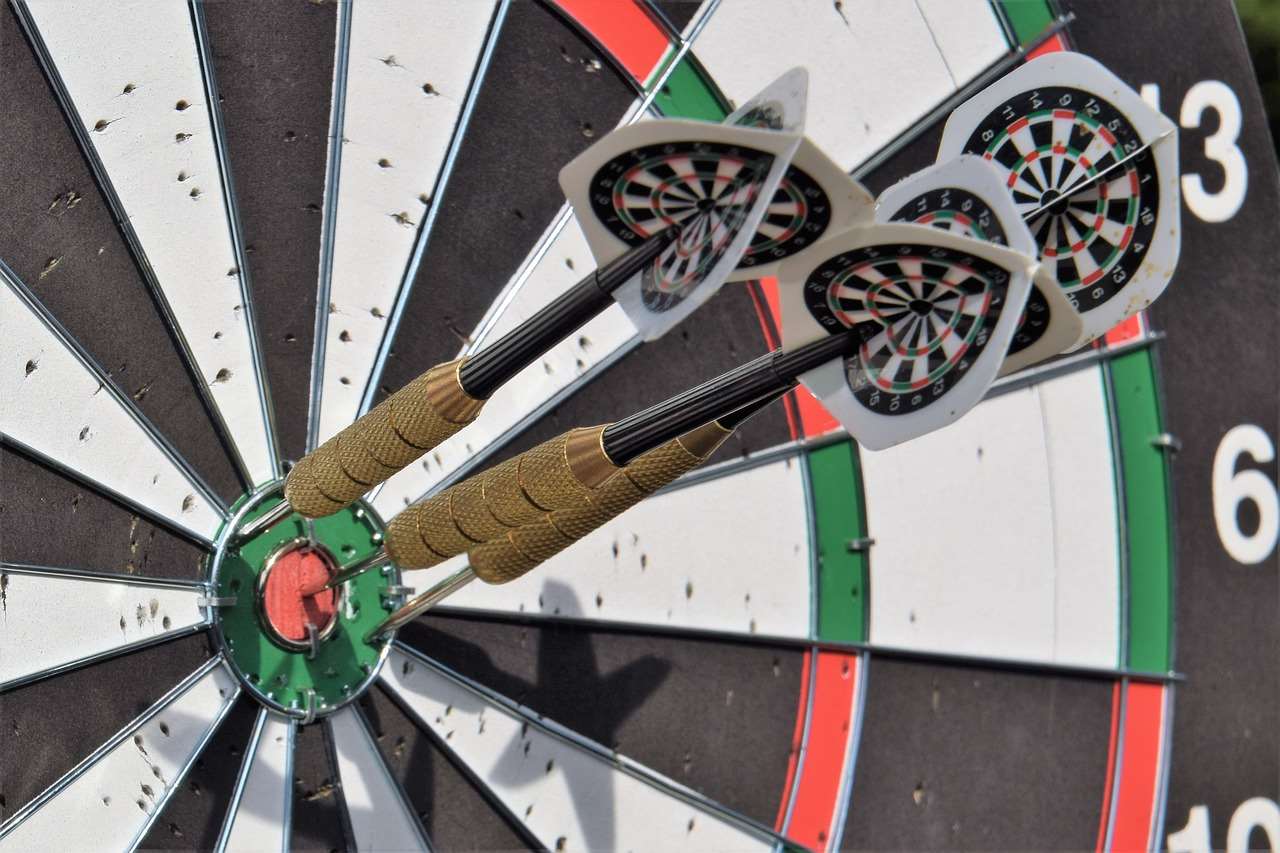
Seeking Feedback
Getting feedback from experienced dart players or coaches can provide valuable insights and guidance.
- Find a Mentor: Seek out a more experienced dart player who can provide you with advice and support.
- Join a Dart League: Joining a dart league provides you with opportunities to compete against other players and receive feedback on your game.
- Attend Coaching Sessions: Consider attending coaching sessions with a qualified dart coach.
Consider exploring Fun dart game variations with modified rules to keep practicing enjoyable and engaging.
Conclusion: Mastering Darts and Achieving Scoring Inner Bull 50 Points
Scoring inner bull 50 points consistently in darts is a rewarding achievement, attainable through dedicated practice, strategic adjustments, and a focused mental approach. Remember that mastering the fundamentals – stance, grip, and throwing technique – is the foundation upon which you build your skills. Consistent practice drills, coupled with careful analysis of your performance, will reveal areas for improvement. Overcoming common challenges like the yips and inconsistency requires patience and a positive mindset. By incorporating advanced strategies, such as dart customization, trajectory adjustments, and mindfulness, you can further enhance your game. Success in darts, like in many endeavors, comes down to dedication, persistence, and a passion for continuous improvement. Now that you know the secrets to scoring inner bull 50 points, pick up your darts and start practicing!
Ready to take your dart game to the next level? Join our exclusive darts community for access to advanced training, personalized feedback, and expert coaching. Sign up today and start dominating the dartboard!
Hi, I’m Dieter, and I created Dartcounter (Dartcounterapp.com). My motivation wasn’t being a darts expert – quite the opposite! When I first started playing, I loved the game but found keeping accurate scores and tracking stats difficult and distracting.
I figured I couldn’t be the only one struggling with this. So, I decided to build a solution: an easy-to-use application that everyone, no matter their experience level, could use to manage scoring effortlessly.
My goal for Dartcounter was simple: let the app handle the numbers – the scoring, the averages, the stats, even checkout suggestions – so players could focus purely on their throw and enjoying the game. It began as a way to solve my own beginner’s problem, and I’m thrilled it has grown into a helpful tool for the wider darts community.